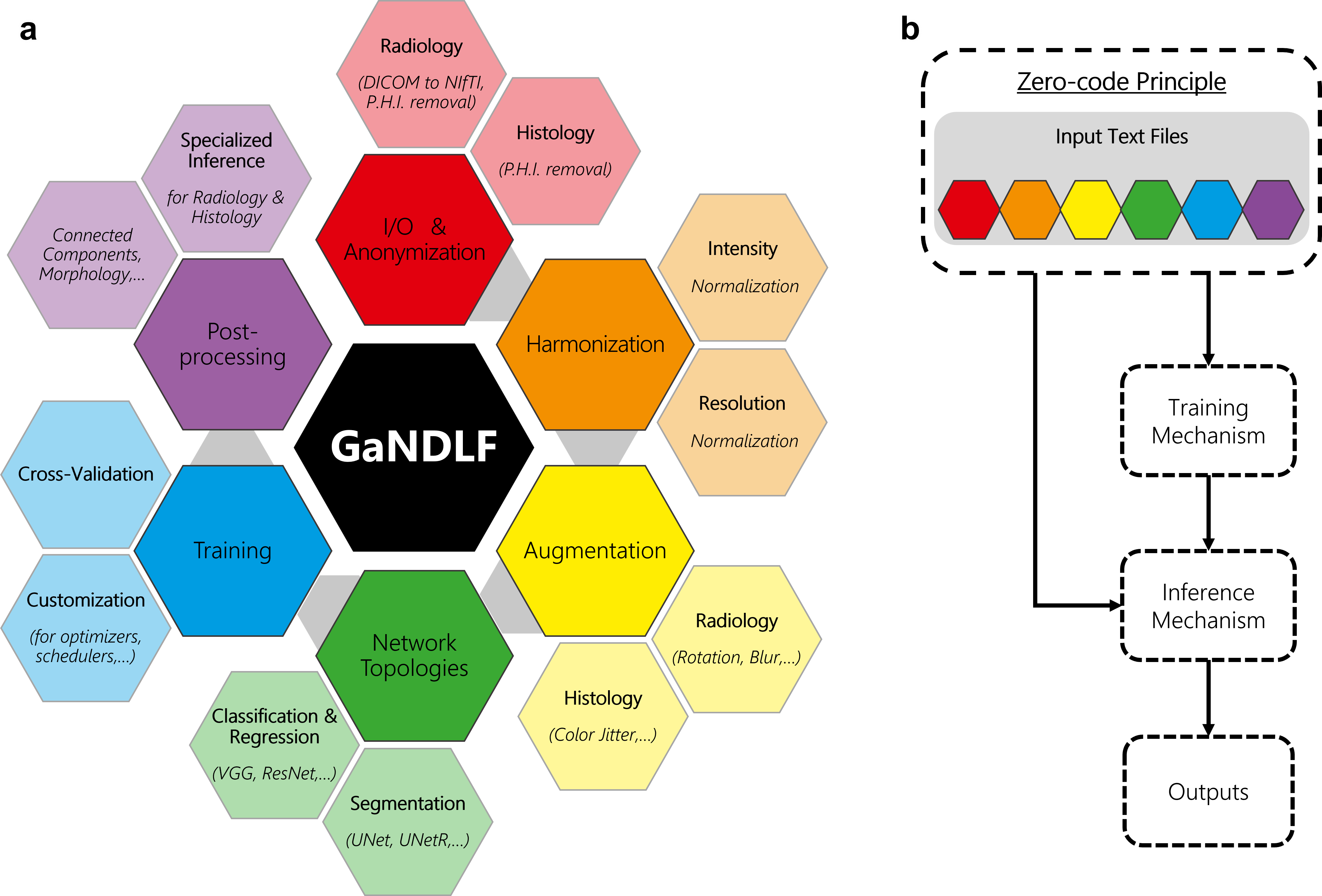Launching GaNDLF for Scalable End-to-End Medical AI Workflows
Published in Electrical & Electronic Engineering

We are excited to announce the publication of the Generally Nuanced Deep Learning Framework (GaNDLF), which is a real community-based contributions-drive by multiple industry/academic collaborative group, MLCommons. Its focus on zero-/low-code principles facilitates use by operators both with and without extensive machine learning development experience, we want to allow greater contributions from healthcare researchers.

GaNDLF follows certain guiding principles during its development, which include:
- Good ML practices: built-in cross-validation of the data cohort, which prevents model over-fitting and report robust statistics for specific tasks.
- Robust development practices: multiple continuous integration checks for every type of computational task enables every pull request to be tested before getting merged to the main repository.
- Maximize reproducibility: enables new members to be onboarded to existing computational pipelines (for both code and experiments) for specific groups quicker and minimize information loss when veteran group members leave.
- Integrated diagnostics: by ensuring support of multiple data types (current support includes radiographic and histologic datasets), GaNDLF enables data fusion, and integrated diagnostics.
- Diverse data augmentation: GaNDLF supports both generic (intensity and spatial) and specialized (for specific data types) data augmentation, which enables robust model training.
- Modular architecture: this allows direct use of existing software libraries, such as transformers, PyG, and MONAI.
Finally, GaNDLF currently has seamless integrations with other open-source tools to augment its functionality, including a robust data augmentation pipeline using TorchIO and albumentations, predefined generation of post-training optimized models by OpenVINO, direct federated learning (both simulated and real-world) of GaNDLF models by OpenFL, and model deployment by access-controlled secure containerization via MLCube.
Open, inclusive efforts such as GaNDLF can drive innovation and bridge the gap between AI research and real-world clinical impact. To achieve these benefits, there is a critical need for broad collaboration, reproducible, standardized and open computation, and a passionate community that spans academia, industry, and clinical practice. Join us.
Follow the Topic
-
Communications Engineering

A selective open access journal from Nature Portfolio publishing high-quality research, reviews and commentary in all areas of engineering.
Related Collections
With Collections, you can get published faster and increase your visibility.
Applications of magnetic particles in biomedical imaging, diagnostics and therapies
Publishing Model: Open Access
Deadline: May 31, 2026
3D Integrated Circuits and Heterogeneous Integration
Publishing Model: Open Access
Deadline: Mar 31, 2026






Please sign in or register for FREE
If you are a registered user on Research Communities by Springer Nature, please sign in